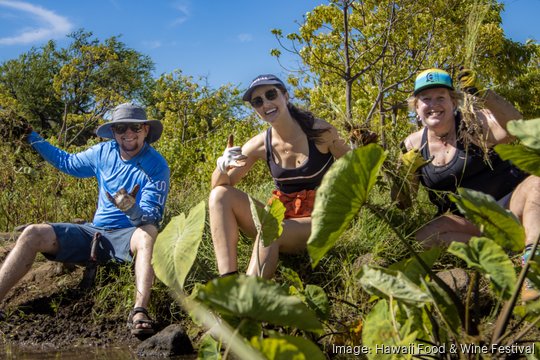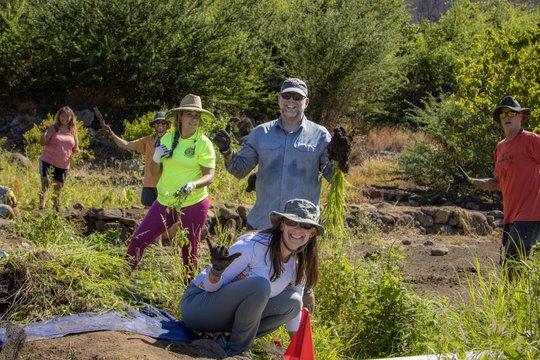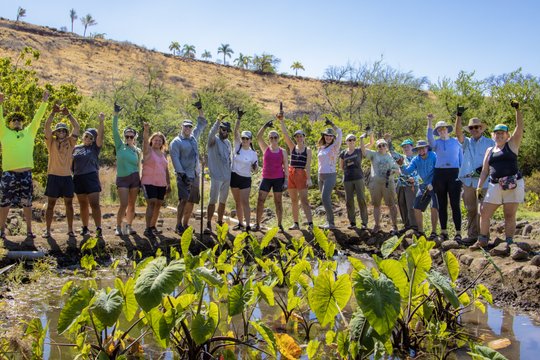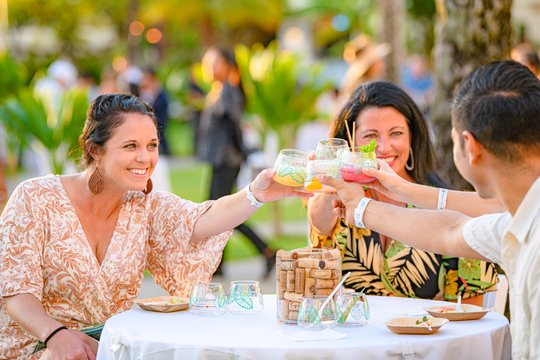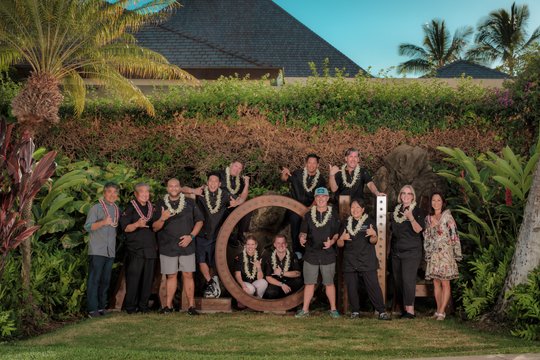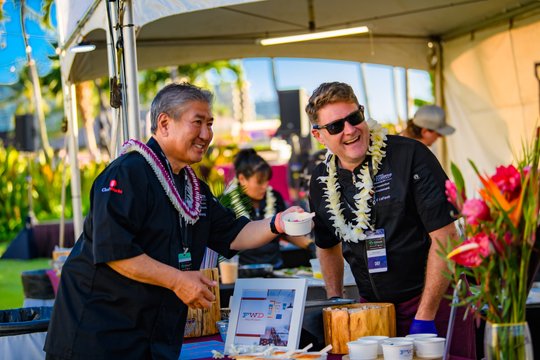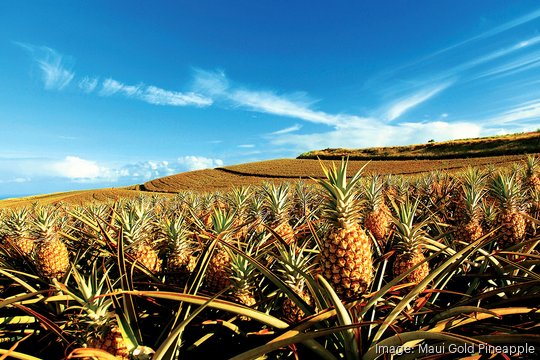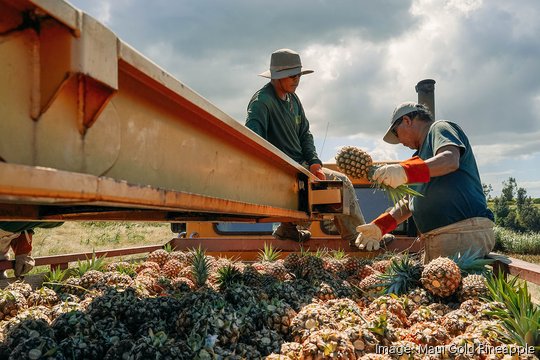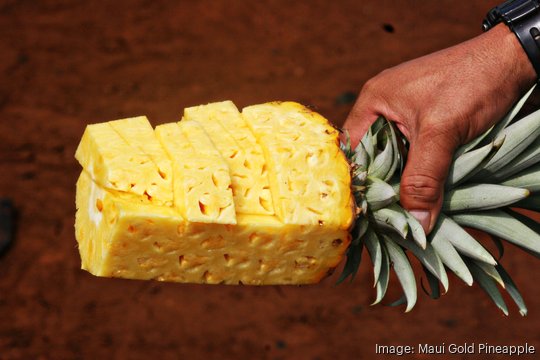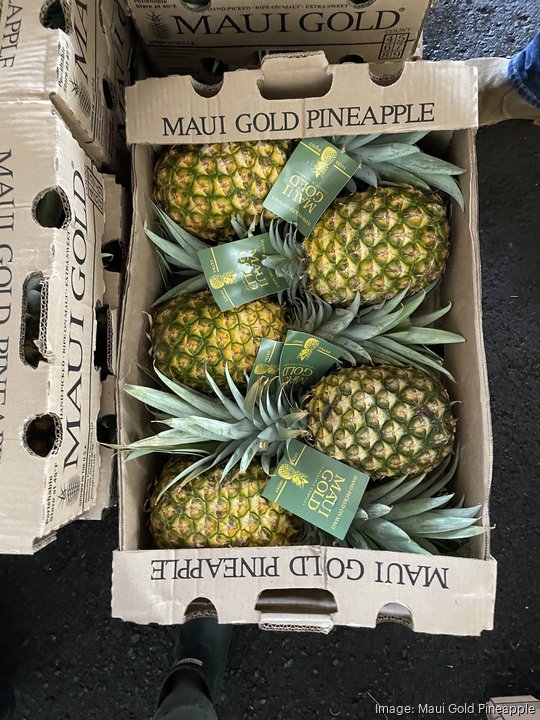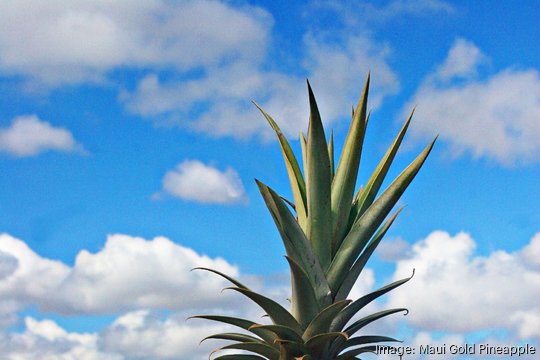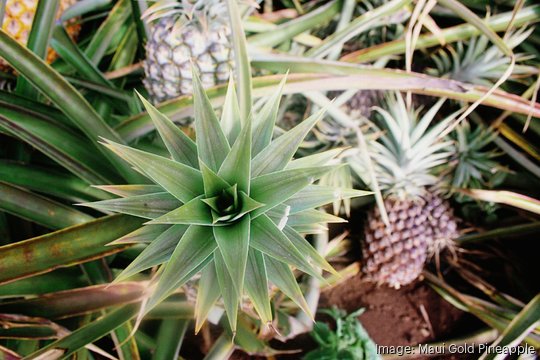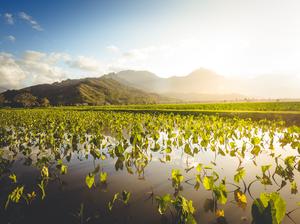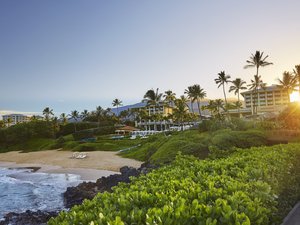When Hurricane Dora passed south of Hawaii, winds spread wildfires that destroyed most of Lahaina town, killed at least 97 people and burned homes, businesses and restaurants on Maui.
Heavily impacted — but less talked about — are the farmers and ranchers, who lost crops to high winds and pastures to fires, as well as revenue when restaurants, hotels and agritourism disappeared overnight.
Maui Gold Pineapple, which farms 757 acres in Upcountry Maui and produces about 1.5 million pineapples each year, lost its offices and retail store on Front Street in the Aug. 8 Lahaina fire.
“We probably lost — on the wholesale and retail side — 65 to 70% of our market, in a two-day period of time,” said Darren Strand, director of agriculture at Maui Gold Pineapple, during Pacific Business News’ annual Agriculture Roundtable, held virtually Sept. 8.
Roundtable panelists spoke about the industry as a whole, but the hour-long conversation quickly focused on Maui. More than 1,000 farms were impacted by the fires, said Brian Miyamoto, executive director of Hawaii Farm Bureau.
“Initially, we were looking at: OK, the Lahaina farms and the upcountry farms are impacted,” Miyamoto said. “No, it’s quite frankly, all the farms and all the producers there.”
Four fires broke out on the Valley Isle Aug. 8, including one that destroyed much of Lahaina town. The humanitarian impact of the fires is clear: 97 people died, more than 2,000 homes were destroyed and more than 800 businesses were lost, according to a Sept. 6 report from the state of Hawaii’s Department of Business, Economic Development & Tourism. But now the secondary impacts of the loss are taking shape, including the $2.7 million in daily revenue that is not coming into the Valley Isle because these businesses — and the tourists supporting them — are gone, the report noted.
Hawaii Farm Bureau has been surveying damage from the fires and corresponding hurricane force winds, which hit Maui last month. Today, many of Maui’s agricultural producers who didn’t lose crops, are struggling to find new buyers for food once sold to restaurants and hotels. For others, the situation is more dire and there are no crops to sell.
Joining Strand and Miyamoto for the roundtable discussion were Jesse Cooke, vice president of investments and analytics at Ulupono Initiative, an organization working to increase locally produced food in Hawaii, and Denise Yamaguchi, executive director of Hawaii Agricultural Foundation, which is working to support farmers and ranchers impacted by the Maui fires.
Meet the panelists
Denise Yamaguchi, executive director of Hawaii Ag Foundation, and founder and chief executive officer of the Hawaii Ag & Culinary Alliance
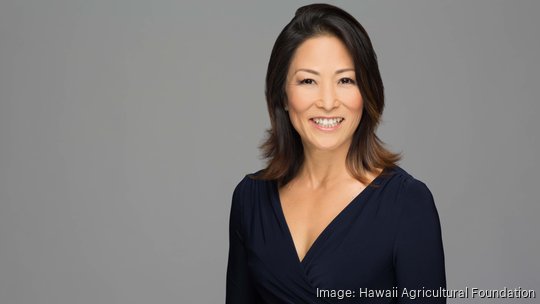
Jesse Cooke, vice president of investments and analytics for Ulupono Initiative
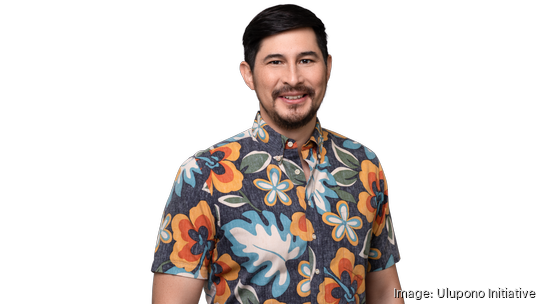
Brian Miyamoto, executive director, Hawaii Farm Bureau
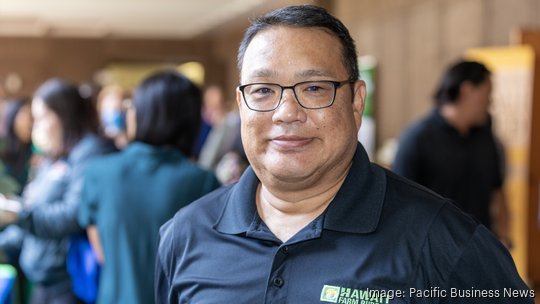
Darren Strand, director of agriculture, Maui Gold Pineapple
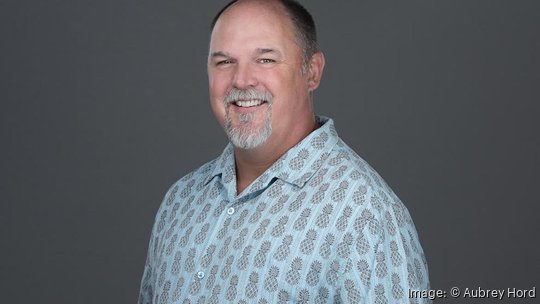
Crops without buyers
Yamaguchi has been working closely with the Maui Farm Bureau to help find new markets for farmers and buyers for their produce.
“Eighty percent of Maui is dependent on tourism — and just like when Covid happened — a farmer immediately lost their market,” she said.
The Hawaii Agricultural Foundation is partnering with the Hawaii Ag & Culinary Alliance, the parent organization of the Hawaii Food & Wine Festival, of which Yamaguchi is also co-founder and chief executive officer, to raise money for farmers and food workers impacted by the sudden loss of tourists on Maui.
The Hawaii Food & Wine Festival
The Hawaii Ag & Cullinary Alliance brought back its Kokua Restaurant Hospitality Fund to support restaurant, bar and hospitality workers impacted by the fires with a one-time $1,000 card issued on a first-come, first-serve basis. The fund also allows donors to support Maui’s agricultural producers by designating a gift is for “farmers.”
“All funds designated for farmers will go directly to the Maui County Farm Bureau to support farmers and ranchers on Maui,” Yamaguchi shared in a follow-up email.
Ensuring farmers are paid for their produce — and not donating it — helps them stay in business, she said.
“That has to be purchased,” Yamaguchi said. “And we were trying to get [that produce] to the chefs who are feeding those in need, but even that was a challenge because you had, maybe, an overabundance of leafy greens. We had to find different places to place that product.”
Kula Produce bought some of that produce, Yamaguchi said. So did a food bank that worked with a national partner to fund the purchase.
“We’ve been talking to the Maui County Farm Bureau about putting a system in place — four or five markets for produce — when this [kind of emergency situation] happens,” Yamaguchi said.
But the problem isn’t just finding buyers.
“We don’t have enough cold storage on island,” Yamaguchi said.
Welcoming tourists back to Maui is also critical to farmers’ success, she said.
“It’s been a month now, and I feel like if the restaurants and the hotels don’t get back to business, the farms are going to ultimately suffer because you can only find so many pivots and so many markets to send your product to,” Yamaguchi said. “Maui is so dependent on tourism. Messaging about welcoming visitors back and having people on island is going to be critical in the next — I would say — 60 days.”
Burned pastures
Ranchers lost at least 3,000 acres of grazing land for livestock to the fires, Miyamoto said.
Some estimates put that number closer to 6,000 acres, he noted.“They’re burned.”
At least 500 cattle have been displaced, according to surveys conducted by Hawaii Farm Bureau, Miyamoto shared in a follow-up email.
To fill the immediate need, Hawaii Farm Bureau partnered with Suma Farms, based on Oahu, and Young Brothers, which ships products between the islands, to send livestock feed to Maui.
“But we knew that wasn’t going to be enough,” Miyamoto said. “We just don’t grow enough here.”
Hawaii Farm Bureau also reached out to Mainland companies for help. Harlan Feed, located in Northern California, donated a 40-foot shipping container of feed, worth about $12,000. Pasha Hawaii donated the shipping for that feed, worth $8,000.
“In the meantime, we knew that we needed much more feed, so we got another five 40-foot containers donated,” he said.
Matson provided the shipping, worth $30,000.
“While this immediate response is necessary, ranchers will begin to assess their pastures and consider how many cattle the land can effectively carry,” Miyamoto said. “They will cull herds to adjust to this, as many ranchers also do during drought — this beef goes to feed our local community.”
It’s not just cattle that are impacted by the shortage of grazing land but horses, goats and pigs, Miyamoto noted.
Destroyed crops
The fires impacted the pastures of ranchers, but for many farmers, hurricane winds caused the most damage, Miyamoto added.
“People aren’t really talking about the wind damage,” he said. “That was a big, big impact.”
At Maui Gold Pineapple, wind destroyed partner farms once featured in tours. The company had to lay off 32 employees, most of whom were directly tied to these tour operations, Strand said.
“We have partnerships, or operating agreements, to do tours on a cacao farm in West Maui and a coconut farm in West Maui,” he said. “And both of those are 100% closed down right now, so the employees associated with that are laid off.”
Maui Gold Pineapple
At the cacao farm, the trees were completely defoliated, he said. At the coconut farm, all the coconuts dropped and flowers were knocked off trees.
“More than the fire, the windstorm of the night before did a lot of damage,” Strand said. “For permanent crops like that, what that means is we’re six months away from cacao pods, and we’re about a year away from any harvestable coconut.”
Disrupted irrigation
Roughly 60,000 feet of irrigation line were lost in the fires, either because it was burned or disrupted by winds, Miyamoto said.
At Maui Gold Pineapple, the company’s upcountry fields weren’t affected by the winds or fires but its water system was damaged. A helicopter fighting fires with water from a farm reservoir caught part of the liner and ripped it, Strand said.
Initial estimates to fix the liner on the reservoir were $300,000, assuming it can be repaired, Strand clarified by email. A new liner would cost more than $500,000. Ideally, pineapple should be watered every three weeks, he said.
“We haven’t been able to irrigate now for four or five weeks, since the fire,” Strand said.
Particularly difficult is that farmers fund improvements to their operations by selling crops.
“We’re always selling our product and investing that right back into the farm all the time,” Strand said. “When you have a situation like this, where we need to be making the investment but all the products — and the revenue that we have for products and tourism and retail — is zero, it’s really difficult to do. We’re lucky we’re in a good position to continue to invest in those farms and get them back to health, but we know it’s going to be a year of investment without any return.”
Unfenced fields
Farmers also lost 100,000 feet of fencing, according to research by Hawaii Farm Bureau, Miyamoto said. That fencing keeps cattle in, but it also keeps invasive species, such as axis deer, out.
“Why is that critical?” Miyamoto said. “Well, because Maui County has got a big axis deer problem. Part of the recovery is to replant — to reseed. Ranchers don’t want to do that because if they do that, the deer will come right in and eat all of that up.”
For Maui Gold Pineapple, axis deer were causing damage to pineapple fields, even before the fires. In 2022, deer damaged the company’s fields, causing loss of fruit on more than 20 acres and a revenue loss of more than $1 million, Strand told PBN. The company received financial support from the state Legislature in the form of a grant to fence off a “significant” amount of property last year, he said.
“Generally speaking, we have been frustrated over the last several years with the lack of funding for infrastructure improvements or agency [state Department of Agriculture] staffing, but this last session, Maui Gold and farmers on Maui had an unprecedented level of support towards axis deer control and direct-to-farmer grants,” Strand said.
A way forward
For Maui Gold Pineapple, the path forward involves selling pineapples. Each sale supports local jobs and allows for new investments.
Maui Gold Pineapple has pledged to donate 10% of the sale of each pineapple to nonprofits focused on relief efforts as part of its Pineapple Pledge. The sale of each pineapple also funds the salaries of Maui employees.
“We’re telling people go to Mauigold.com, and buy pineapple,” Strand said. “And then, finally, please come back to Maui and visit in a responsible way. The statement to shut everything down — at first, it was necessary, but it’s painful now. … It’s important for us to start to have visitors come back and participate in the community and tours.”
Farmers as ‘firefighters’
Leading up to the wildfires on Aug. 8, the National Weather Service issued red flag warnings — which announce an area is at increased risk of a fire for the next 24 hours — in Maui County and Hawaii County.
We didn’t hear much about what happened on the Big Island, right?” said Brian Miyamoto, executive director of Hawaii Farm Bureau, during Pacific Business News’ Agriculture Roundtable on Friday, Sept. 8. “It could have been similar but our farmers and our ranchers, according to what [Hawaii Department of Agriculture] is saying, prevented the fire from going down to Waikoloa Village.”
The farmers and ranchers are “stewards of the land” and have the kind of equipment needed to create fire breaks and plow or clear brush to protect their crops and livestock.
“Again, they are firefighters,” Miyamoto said.
Ulupono Initiative is looking at the medium- and long-term wildfire prevention strategies, said Jesse Cooke, the organization’s vice president of investment and analytics.
“Something folks probably should know about is how important agriculture is for wildfire prevention in general, because agriculture is on the frontlines of that wildland/urban interface,” Cooke said. “That was the issue here, with Maui, was that there wasn’t much agriculture and there was a lot of unmanaged lands all over the place because ag had left.”
Cattle, sheep, goats and other livestock eat up non-native grass varieties, he said. Some of those grasses, such as Megathyrsus maximus, native to Africa and Yemen and known more commonly as Guinea grass, can grow to be 9 feet tall, according to a report on invasive grasses from the University of Hawaii at Manoa’s College of Tropical Agriculture and Human Resources.
Farmers and ranchers often create fire breaks and manage vegetation by mowing, he said. But paying to create these fire breaks and remove Guinea grass is expensive, he added.
“What Hawaii needs to do now for that long term wildfire prevention is think of how we’re going to fund these things,” he said. “Is it going to be taxpayer money? I know there’s federal programs out there. Are our leadership going after those federal programs? … Maui’s in my heart right now. I’ve been searching, researching, trying to find ways to fund these things, because I don’t want this to happen again. Right now, people are pointing fingers. I don’t care about that. Quite honestly, that’ll sort itself out. But what we all need to think about now, is how do we move [forward] from here? How does this not happen — in Waianae? Or in southern Big Island? I mean, it’s hot over there.”
Sometimes, farmers fight fires themselves, he said. Agriculture water systems also provide dip tanks for helicopters fighting fires, he said.
“Farmers are on the frontlines, and folks need to realize that agriculture provides a lot of benefits that we don’t think about,” Cooke said. “It’s not just economics. It’s about food security. We are in the middle of the Pacific Ocean. And now we see that agriculture plays a part in wildfire prevention in a big way.”
Kokua Restaurant and Hospitality Fund
This fund, run by the Hawaii Ag & Culinary Alliance, the parent organization of the Hawaii Food & Wine Festival, has been revived to raise money to support workers at restaurants, bars and hospitality establishments impacted by the fires. To help farmers and ranchers, donate here and specify the gift is for “farmers.”
